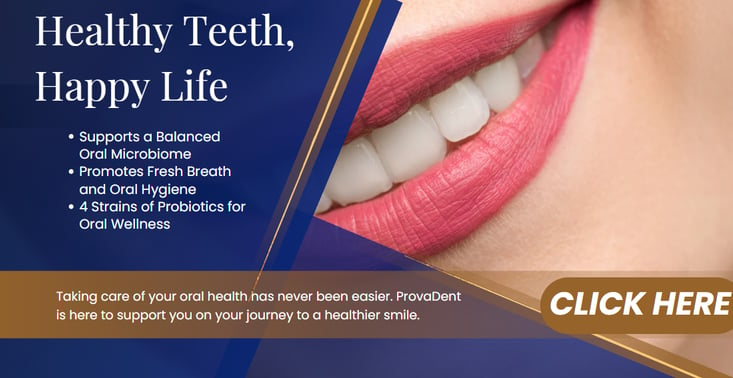Oil Pulling Benefits: The Secret to Healthy Teeth and Gums
Discover the Oil Pulling Benefits with coconut oil reduces plaque and freshens breath naturally. Uncover the ancient oral care for the best radiant smile.
NATURAL HEALTHY TEETH
Dr. Emma Hughes is an experienced dental health expert with over 15 years of clinical practice and academic research in preventive and restorative dentistry.
3/25/202513 min read


Oil Pulling
GuruNanda Whitening Pulling Oil with Coconut Oil & Peppermint Essential Oil for Natural Teeth Whitening, Fresh Breath, Alcohol Free Mouthwash
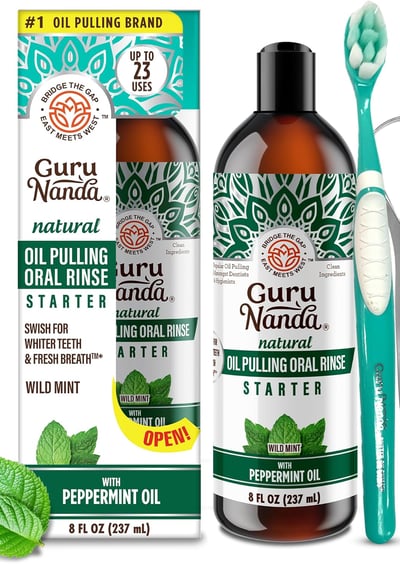

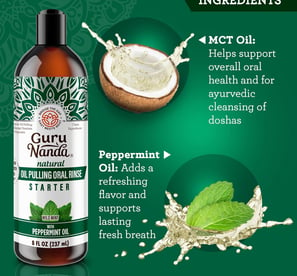



What is Oil Pulling? A Historical Perspective
Oil pulling is an ancient practice that got its start in Ayurvedic medicine. Folks have been practicin it for thousands of years with the idea that swishing oil around in your mouth cleanses not just your teeth but helps remove toxins from the body. The practice, also known by its Sanskrit names like kavala graha, was originally described in texts such as the Charaka Samhita. Most early references talked about using oils like sesame, sunflower, or coconut in the morning on an empty stomach. In its day, people believed that this method not only cleaned the teeth but also helped balance bodily energies, and some even claimed it improved overall health.
A few interesting points about oil pulling that you might find curious:
• It was part of daily routines in many households and seen as an essential practice for good health.
• The idea was that oil “pulled” harmful particles from the mouth, much like how a sponge absorbs water.
• It was also documented as a treatment for over 30 different conditions, from bleeding gums to headaches.
These traditional beliefs have carried over to today’s understanding, though modern science often explains the benefits in simpler terms. Although Natural Healthy Teeth might now offer several alternatives to traditional brushing, many still prefer oil pulling as a complement to their routine. Some old texts might sound a bit exaggerated, but a lot of people still swear by the benefits, even if the language of the original Ayurvedic writings can be hard to decipher at times.
Each morning, when doing oil pulling, one has to be careful with the swishing technique. It might sound simple, but if done too aggressively, some might risk discomfort or even cause jaw soreness. Compare this to brushing, which is a more directed activity. It’s interesting to note that many ancient practices passed down through generations have an appeal due to their simplicity—even though scientific methods have provided more quantitative data today.
Oil pulling might seem a bit old-fashioned, but it still triggers plenty of interest. The practice is simple, has been handed down through centuries, and many find that its simplicity works well for them despite not replacing the need for modern dental care.
Best oil pulling Products
for Natural White Teeth
Coconut Oil Pulling Mouthwash
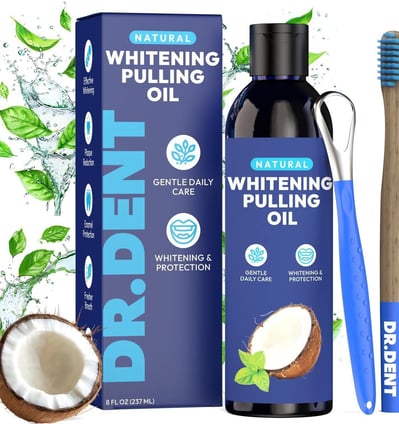

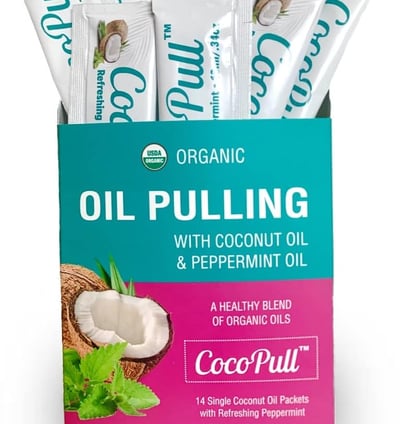

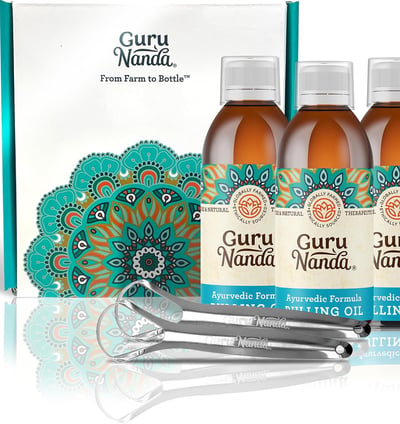

Natural Teeth Whitening & Fresh Breath
AVIVA PURE CocoPull Organic Coconut Oil Pulling
Organic Coconut Oil Pulling - for Natural White Teeth with 14 Unrefined Coconut Oil Pulling Packetsy
GuruNanda Original Oil Pulling with Tongue Scraper
OIL PULLING FOR NATURAL WHITE TEETH
How Does Oil Pulling Work? The Science Behind It
Oil pulling works by using the physical properties of an oil to gently emulsify through the mouth. When you swish oil around, it mixes with the saliva and increases in surface area almost like a natural detergent. This process helps trap bacteria, grime, and toxins that might be lingering between your teeth. The idea is that by reducing these particles, you can lower the chances of plaque buildup and inflammation in your gums.
Many modern studies support that the key to oil pulling’s effect lies in the emulsification process. When coconut oil, for example, interacts with saliva, it releases lauric acid, an agent known for its antimicrobial properties. While it’s not magic, the chemical reaction may reduce the presence of harmful bacteria such as Streptococcus mutans, which is linked to cavities and Early Signs of Tooth Decay. The results, though modest, indicate that oil pulling can be part of an overall oral hygiene routine.
The process is quite simple but requires consistency. People often swish the oil for 15 to 20 minutes. It might sound long, and it kinda is, but during this time, the oil binds with the debris and toxins present in your mouth. Some scientific studies even show that regular use of oil pulling results in improved gingival index scores, meaning the gums become less inflamed and healthier overall.
An added bonus is that the process also seems to help stabilize the pH level in the mouth. A balanced oral pH can prevent the growth of acidogenic bacteria that cause dental caries. This dual nature—mechanical removal of bacteria through emulsification and chemical reduction of harmful agents—makes oil pulling an intriguing supplementary method in dental care.
Despite some skeptics, the science behind oil pulling remains logical for many. It is not a replacement for brushing or mouthwash, but more like a natural helper in maintaining oral hygiene. The process may have slight benefits over using synthetic chemical mouthwashes, as it carries fewer risks of staining or altering taste. For more detailed insight into maintaining oral balance, consider reading Your Path to Optimal Dental Health.
In a nutshell, oil pulling uses simple, natural processes to support cleaner teeth and healthy gums. It ain’t a cure-all, but it enough helps when used as part of a broader dental care routine.
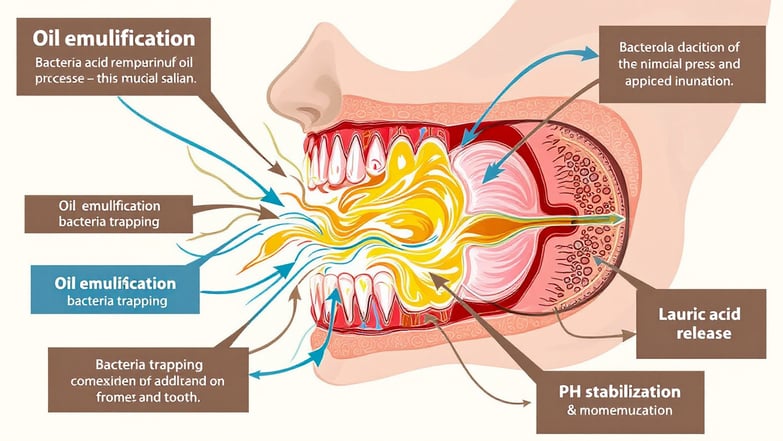

Benefits of Oil Pulling for Oral Health
Oil pulling offers several potential benefits when it is practiced correctly. One of the main advantages is its gentle method of reducing bacteria in the mouth. When you swish the oil, it traps harmful microorganisms that normally contribute to plaque buildup, bad breath, and even some gum issues. Scientific studies suggest that regular oil pulling may lead to noticeable improvements in oral health, even though the benefits tend to be modest compared to conventional treatments.
Using oil pulling as a daily ritual can also help in minimizing plaque accumulation. It is said to reduce gingival inflammation over time, which in turn can lead to healthier gums and less bleeding when you brush. These reductions, while not as dramatic as those achieved with chlorhexidine mouthwashes, still provide a helpful natural alternative. Many users appreciate the fact that oil pulling doesn’t come with the unwanted side effects that chemical mouthwashes sometimes bring, like taste disturbances or staining.
Another benefit is the stabilization of oral pH. Maintaining a nearly neutral pH in your mouth is crucial because it inhibits the growth of bacteria that thrive in acidic conditions. This balance supports a cleaner and more comfortable oral environment. The practice works well when integrated with regular brushing and flossing, offering an extra layer of care rather than trying to replace everyday dental habits. For those interested in early detection of decay, checking out Early Signs of Tooth Decay might provide some additional insights.
People who have incorporated oil pulling in their routine often talk about its calming effects on the mouth. After a session, there is usually a sense of freshness that many find quite rewarding, even though it may not be as intense as using a menthol-flavored mouthwash. Some even mention that the process, done early in the morning, sets a positive tone for the day. It is a habit that can become meditative over time, even if it does take a bit of effort and time to get used to the 15-20 minutes of swishing.
Here’s a quick review of the main benefits in table form:
Overall, while oil pulling should not be the only method you rely on for oral care, it certainly has enough benefits to be considered a useful complement to brushing, flossing, and regular dental check-ups.
Comparing Oil Pulling with Modern Dental Practices
When looking at oil pulling against modern dental practices, it is clear that both have their distinct roles and strengths. Oil pulling, an age-old method, relies on natural processes to reduce bacterial load in the mouth. In contrast, modern practices use scientifically formulated products like chlorhexidine mouthwash, fluoride treatments, and professional cleanings, which have been proven to be more effective for certain dental issues—especially when it comes to fast plaque control.
Oil pulling usually involves swishing oil for 15-20 minutes, a process that requires consistency and patience, whereas modern treatments often work within minutes. Some people find the routine of oil pulling to be a bit tedious, and its effectiveness is modest in terms of measurable improvements. For instance, clinical studies have shown that while oil pulling can reduce plaque and gingival inflammation, the decreases are generally less significant compared to those achieved with chlorhexidine-based solutions. However, oil pulling comes with fewer side effects. While chlorhexidine might lead to staining of the teeth or alterations in taste, oil pulling is generally free from such issues.
The benefits of both methods can coexist if used appropriately. Many dental experts suggest that oil pulling can be used as an adjunct treatment rather than a sole method of oral care. For example, you might use oil pulling in the morning and then follow up with brushing and flossing later. This combination tends to offer a more thorough cleaning routine. If you're curious about products that complement your routine, check out Dental Health Products for more options.
Oil pulling’s more gradual and natural mechanism contrasts with the immediate effects of chemical agents found in modern mouthwashes. The science behind modern products is robust, but sometimes their harsh ingredients can be a turn-off for individuals looking for gentler methods. On the flip side, oil pulling uses basic resources like coconut, sesame, or sunflower oil and can be easier on sensitive mouths.
Consider these comparisons in a quick glance:
• Oil pulling requires more time but is natural and less likely to cause adverse effects.
• Modern products work faster and show more dramatic results in plaque removal, but may carry some risks.
• Both methods, when used together, might cover the shortcomings of each.


It’s important to note that while modern dental practices are highly effective, oil pulling offers a natural means to support the health of your mouth. Each has its benefits, and knowing when and how to use them can lead to a balanced approach in dental care. Using natural methods like oil pulling along with scientifically proven practices can give you a wholesome routine that takes care of both immediate and long-term dental health.
Risks and Limitations of Oil Pulling
Even though oil pulling is considered a natural practice, it isn’t devoid of risks and limitations. For starters, the process itself can be a bit challenging. Some users have reported mild jaw soreness or headaches after extended swishing sessions, especially if they aren’t used to the motion. It is also worth mentioning that if the oil is accidentally inhaled, there’s a small risk of lipoid pneumonia, a rare but serious complication. Such risks mean that those trying oil pulling should do so carefully and steadily.
Another thing to watch out for is swallowing the oil. Though the concept behind oil pulling is to trap bacteria and toxins, if the oil is swallowed, it can lead to stomach upset, nausea, or even diarrhoea. This is especially true when using lower quality oils that might not have been properly purified. Always aim for high-quality, organic oils to reduce this risk. Furthermore, the lengthy process—15 to 20 minutes per session—can be a major limitation for people with busy schedules, making it impractical for some.
The overall benefits in terms of reducing plaque and gingival inflammation are often modest. When compared to modern treatments like chlorhexidine mouthwash, oil pulling is generally less effective in immediate plaque removal. The American Dental Association (ADA) does not recommend oil pulling as a substitute for brushing and flossing because it falls short in removing tartar or treating dental caries. For additional information on relevant oral conditions, Tooth Decay is an excellent resource.
Another point of caution is the potential risk of allergic reactions. If you’re allergic to coconut, sesame, or sunflower oil, you should avoid oil pulling or seek advice from a health expert before trying it out. Also, it’s been noted that there’s a risk of heavy metal contamination if the oil used comes from unregulated sources. For those reasons, thorough research on the product’s origin is essential before incorporating it into a daily routine.
Here’s a short table to summarize the main risks:
Overall, while oil pulling can be a beneficial addition to your oral hygiene routine, it carries enough risks and limitations that it should not replace tried-and-true dental care practices. Being aware of these factors will help you decide if oil pulling is right for you and, if so, how to do it safely.
How to Incorporate Oil Pulling into Your Routine
Starting oil pulling isn’t rocket science, but it does take a bit of getting used to. First off, you should consider oil pulling as a supplement to your existing oral care routine—not as a replacement for brushing and flossing. My own experience with oil pulling started on lazy mornings when I had a bit more time. At first, the idea of swishing oil for 15 to 20 minutes seemed a bit much, but once I got the hang of it, it became a peaceful routine.
Here’s a simple guide to get started:
Choose your oil: Many people opt for coconut oil because of its pleasant taste and known antimicrobial benefits, but sesame or sunflower oil also work well. Ensure you select high-quality, organic oil to avoid any contaminants.
Morning routine: Begin oil pulling on an empty stomach. Take about one tablespoon of oil and swish gently in your mouth. Don’t gargle too loudly; just let the oil move around to cover every corner of your mouth.
Time it right: Aim for 15-20 minutes. If you’re new to it, you might start with shorter periods and gradually increase the time as you get comfy.
Spit it out: Once done, spit the oil out into a trash can (not the sink, as it can clog pipes) and rinse your mouth with water. Follow with your normal brushing routine.
Some users notice a fresh feeling in their mouth and a slight reduction in plaque buildup over time. For more detailed techniques and natural tips to keep your teeth strong, you might want to visit How to Strengthen Teeth Naturally.
It is important to note that consistency is key. You may not see dramatic improvements overnight, but with regular practice, the benefits can accumulate. A few friends of mine, who started oil pulling on the side, shared that it gave them an extra boost in feeling that their mouth was cleaner and their breath fresher—though they still relied on brushing to keep things really in check.
Below is a simple table that outlines the process:
Remember, oil pulling is a daily ritual that complements your overall dental health. It works best when combined with other proven methods like brushing with fluoride toothpaste and flossing. Consistent practice over weeks can give you a better sense of whether this traditional method suits your lifestyle.
Balancing Tradition and Modern Science
The topic of oil pulling sits at the crossroad of ancient traditions and modern science. Many people appreciate that oil pulling comes from a long history of Ayurvedic practices, and it offers a natural way to support oral health. Over the years, researchers have taken a closer look at these traditional methods, trying to find a scientific basis for the benefits reported over centuries.
Historically, oil pulling was primarily seen as a way to detoxify the body. In early Ayurvedic texts, the practice was said to cleanse the entire system, even though today we understand it mostly as an oral hygiene aid. Modern studies have confirmed that the process can reduce bacteria and plaque, though the improvements are typically modest when compared to synthetic mouthwashes. Nonetheless, many find that combining oil pulling with modern dental care offers a balanced approach.
For instance, after a session of swishing oil, you might feel that your mouth is naturally cleaner, and some observers note a reduction in gingival inflammation over time. This benefit, although minor when measured quantitatively, is appreciated because oil pulling doesn’t introduce the chemical side effects sometimes seen with standard mouthwashes. If you’re in the market for natural ways to keep your smile bright, you can also review tips from Natural Teeth Whitening Tips for a Brighter Smile.
At the same time, modern science often advocates for the use of dental products and professional treatments that show immediate, measurable improvements in oral health. The truth is, many experts believe that oil pulling should work in tandem with these methods rather than replace them. I remember when I first tried combining my morning oil pulling routine with a regular dental care habit, I found that it filled in some of the gaps left by brushing alone. The natural approach helped maintain a balanced pH in my mouth, while fluoride toothpaste provided a direct defense against cavities.
Below is a simple comparison table highlighting the benefits and limitations of both approaches:
In balancing these two worlds, it is clear that no single solution fits all needs. Oil pulling offers a gentle, natural option that can be integrated into daily routines, while modern dental products bring measurable efficiency and faster results. By merging both, you can create a well-rounded oral hygiene practice that takes advantage of the benefits of each.
In essence, understanding and combining traditional wisdom with modern evidence is the best road to achieving overall dental wellness. Choose the practices that fit your lifestyle and needs, and stay consistent for the best long-term outcome.
Oil Pulling Benefits : Frequently asked questions
Is oil pulling safe for all age groups?
While oil pulling is generally safe for adults, caution should be used with young children. Kids might find it difficult to swish the oil properly without swallowing it. Consult a dental expert before introducing the practice to children.
Can oil pulling replace brushing and flossing?
No, oil pulling is meant to be a supplementary approach. Brushing with fluoride toothpaste and regular flossing are essential for optimal oral health and should not be replaced by oil pulling alone.
How often should I practice oil pulling?
Many find that doing it once daily in the morning on an empty stomach works best. However, the frequency can be adjusted based on personal comfort and results.
What type of oil should I use for oil pulling?
High-quality coconut oil is widely favoured due to its taste and antimicrobial properties, but sesame or sunflower oil can also be effective. Choose an organic option if possible.
How long does it take to see results from oil pulling?
Results can vary from person to person, but many report a fresher mouth and reduction in minor gum inflammation after several weeks of regular practice.
Dental
Explore tips for maintaining healthy teeth and gums.
Care
Advice
+07585653512
© 2024. All rights reserved.

